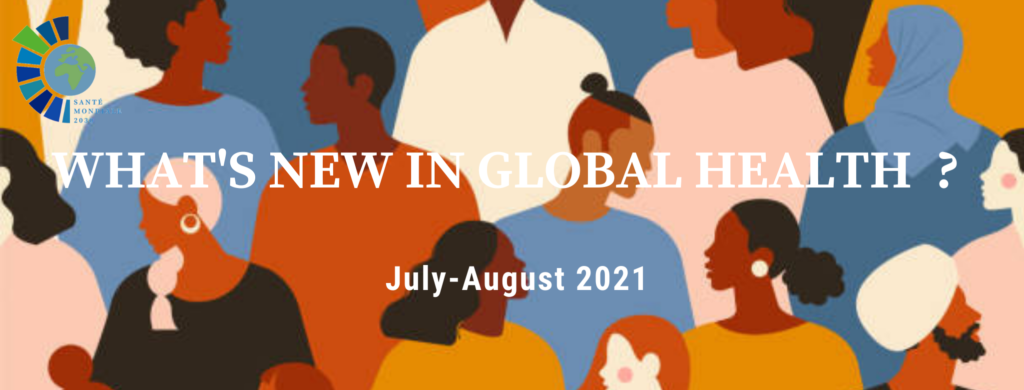Dear all,
Echoing the Generation Equality Forum held in Mexico City in March and in Paris from June 30 to July 2, 2021, we offer a summer press review (July-August) dedicated to the consequences of the Covid-19 pandemic from a gender perspective.
As early as spring 2020, it appears that women are paying a higher price than men to the epidemic. Several factors are immediately identified: greater exposure of women to the virus due to their over-representation in the health and service sectors and, compared to men, a greater proportion of women affected by job losses related to the pandemic.
One year later, the observation remains valid. Only in the medical field women happen to be been less affected by Covid-19 than men. In the social and economic sphere, the consequences of the pandemic on women are immense. At the macro level, the World Economic Forum estimates in its annual study published in April 2021 that the health crisis has delayed the time needed to achieve gender equality by more than a generation. A study by the Fondation des femmes details, in the French case, the different temporal sequences and their impacts on women in terms of division of domestic and educational work, professional equality, ability or not to adapt professional activity, job loss and its differentiated consequences according to the existence or not of social protection.
While these studies are growing for high-income countries, they are still relatively scarce for resource-poor countries. Existing studies show that in Latin America and the Caribbean, women have been more vulnerable than men to the labor market changes brought about by the pandemic. Indeed, they occupied – and continue to occupy – a greater proportion of jobs in the informal sector and/or so-called “frontline” jobs, i.e. requiring face-to-face interactions, with less possibility of remote work, such as trade, personal care or tourism. In addition, they have been subjected to an increased domestic workload, with the care of children and dependents falling overwhelmingly to them.
In Africa, the pandemic has resulted in significant disruptions to women-specific services and care, including the closure of many maternal health centers and disruptions to contraceptive supplies, disruptions to HIV prevention services, dramatically reduced school enrollment rates for girls and young women, and increased physical and sexual violence against women. As a study conducted in Morocco in 2021 shows, these difficulties have accumulated, affecting work, increasing domestic work and exposing women to more violence.
The question of the effects of the response and of economic recovery plans on these gender inequalities is therefore strongly raised. In this regard, lessons from past epidemics should be drawn. The Zika and Ebola epidemics have shown that the responses did not take into account structural gender inequalities, and that they ultimately contributed to aggravating them. In this respect, there is much to be done, as shown by the “Covid-19 global gender response tracker“, which proposes to monitor the measures taken by governments in response to the pandemic, highlighting those that take the gender dimension into account.
We should probably go even further. In order to understand the consequences of the pandemic in detail and to design relevant recovery plans, it is necessary to avoid reducing gender to the binarity of men and women, and to adopt an intersectional prism. In other words, to put on glasses that take into account the different social relations – gender, race, class, age, linked to migration, among others – and the specific vulnerabilities that their articulation defines. This is a point that we have already made in a note co-authored with Nathalie Bajos on sexual health and social inequalities through a gender lens. In order to develop and implement policies that counteract the worsening of inequalities, the main challenge is not so much to identify which group is most affected, but to understand how different groups are affected and to decipher the mechanisms at work in the making of these differentiated effects. These are questions that should also find their place in future pandemic preparedness plans, and more generally in public health and global health policies.
We hope that this selection of press articles, scientific articles and reports will give you a clearer view of global health issues.
Enjoy your reading!

